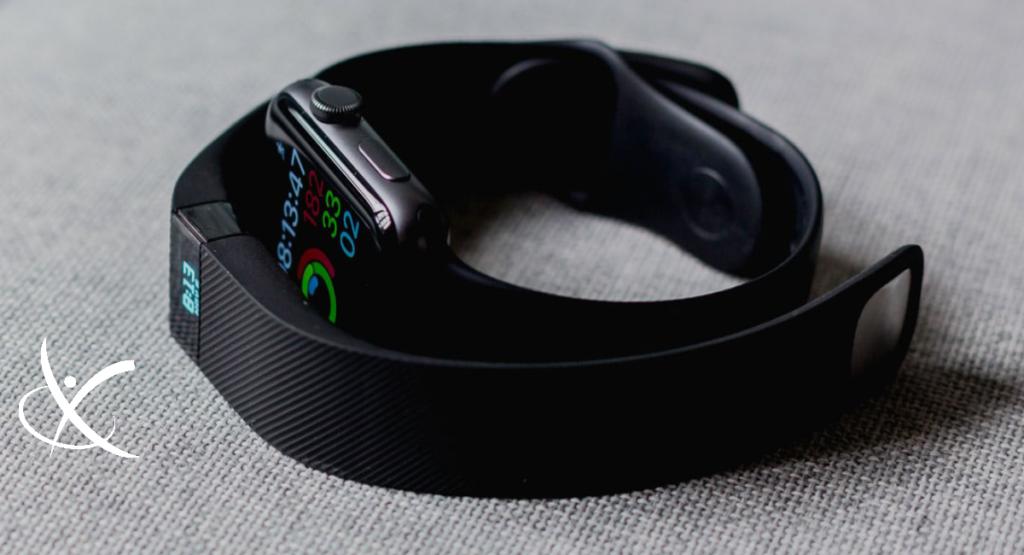Building a Health Offensive
6 Key Metrics to Understand
There are a handful of metrics we want you to understand before we start improving our offense. The rest of today’s read will scratch the surface and introduce these variables to you. Ashley, Justin, and I will be spending the next few weeks going more in-depth talking about how we measure/interpret these variables and what they mean to us. That will help us decide what changes, if any, should be made.
Heart Rate (HR)
Your heart is made of cardiac muscle, which is slightly, but significantly, different from skeletal muscle. And we know that muscles contract. This cardiac muscle, along with your brain will decide how frequently it should “beat” or contract in order to push blood through your body. We measure this in “beats per minute” (BPM) or how many times your heart will contract every 60 seconds. This concept is then applied at rest and during times of exercise. As you exercise, your body’s demand for oxygen and other nutrients increases exponentially so your heart must increase its work rate in order to make the supply of blood meet the demand for the blood.
Resting Heart Rate (RHR)
How often your heart beats per minute during times of rest is important to understand how your body is doing. This is a period of decreased demand, and so your heart rate shouldn’t be too high. We want to track the resting heart rate to understand how well-recovered your body is, among other reasons. It can be a decent measure of health. Most people think their resting heart rate is measured while sitting down somewhere, and while it is true that your HR will and should be lower while hanging out and relaxing, your truest low or resting heart rate is measured best while sleeping. Anyone with a fitness tracker can check their sleep data and see. Throughout the day my resting heart rate is around 60-62 but at night while sleeping I’m down near 51-53 beats per minute.
Heart Rate Recovery (HRR)
HRR is a measure of how quickly your heart will return to lower BPM as soon as you cease exercise. This can be terminating your workout altogether, or even in rest periods between sets during a workout. HRR is a good measure of recovery rate of your body in general. When we’re fatigued, sometimes just walking up the stairs will get our HR up and we feel it for a bit but then it lowers back down. We look at your recovery rate as an indicator of fitness and health.
Heart Rate Variability (HRV)
HRV is the variance or change in the time between heartbeats. It is measured in milliseconds (ms) and quite counterintuitively, it is not symmetrical between beats. For instance, let’s just say your RHR is 60bpm, that doesn’t mean your heart is literally going to beat once every second. There is and should be some slight variance there. If you’ve ever taken your own pulse you’ll notice it might seem like the “pattern” of beats is off from time to time. This is normal and this is a good sign. Which leads me to the notion that a higher HRV is better than a lower one most of the time. HRV is what we use to track how well your Autonomic Nervous System (ANS) is working at rest and during stress. Therefore, we actually use HRV to qualify your heart rate and see how your body is responding to stress, both physical and internal. Remember, it’s not just exercise that can stress you out and cause your body to have to recover, emotional stress, lack of sleep, diet, work, etc can all affect your body’s efficiency and thus, we need a multi-faceted approach to analyzing your body’s response. HRV actually rounds out your heart rate and takes that information to the next level! Pretty cool stuff, well, at least we think so.
Respiratory Rate (RR)
RR measures how many breaths you take. Much like heart rate, it is measured in 60-second intervals and also changes in response to exercise, or demand of oxygen by your body. After all, its job is to take oxygen you breathe in and get it to your blood vessels as best as possible. The harder you work, the harder you will breathe.
Pulse Oximetry (SpO2)
Pulse Oximetry is a measure of the oxygen saturation of your blood. Remember, your heart pumps blood to the lungs where they deliver oxygen into the blood vessels. Now that we’ve got the assembly line in place, we need a measure of how efficiently it is working. SpO2 tells us how much of that oxygen in your lungs is actually getting into the bloodstream. Normal accepted values range from 95%-100% oxygen saturation in the bloodstream. The more oxygen we have to use, the better off we are.
Stress can alter all of these variables and affect how we live, which is why we’re talking about it! The more stressed our system is, the more susceptible we are to breaking down or getting sick. Understanding when we’re pushing too much, or even not pushing hard enough, is paramount when it comes to keeping our bodies healthy and trying to improve performance. Otherwise, we’re taking a shot in the dark. So not only are we talking about staying healthy to prevent musculoskeletal injuries or staving off the common cold, we are also saying that we know what coronavirus and other serious cardiorespiratory diseases will attack, so lets bulletproof ourselves and beat it at its own game. The stronger your system, the better prepared you are to fight and stay ahead of the health game rather than being left to pick up your pieces. It’s time we all start playing a bit more offense.
Happy Training!
